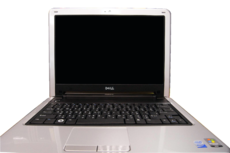
Dell XPS is a line of consumer-oriented laptop and desktop computers manufactured by Dell since 1993.
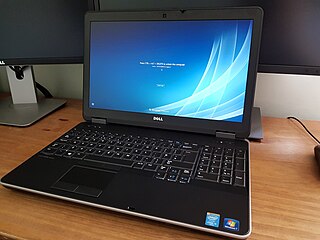
Dell Latitude is a line of laptop computers manufactured and sold by American company Dell Technologies. It is a business-oriented line, aimed at corporate enterprises, healthcare, government, and education markets; unlike the Inspiron and XPS series, which are aimed at individual customers, and the Vostro series, which is aimed at smaller businesses.
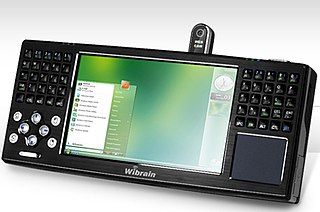
An ultra-mobile PC, or ultra-mobile personal computer (UMPC), is a miniature version of a pen computer, a class of laptop whose specifications were launched by Microsoft and Intel in Spring 2006. Sony had already made a first attempt in this direction in 2004 with its Vaio U series, which was only sold in Asia. UMPCs are generally smaller than subnotebooks, have a TFT display measuring (diagonally) about 12.7 to 17.8 centimetres, are operated like tablet PCs using a touchscreen or a stylus, and can also have a physical keyboard. There is no clear boundary between subnotebooks and ultra-mobile PCs, but UMPCs commonly have major features not found in the common clamshell laptop design, such as small keys on either side of the screen, or a slide-out keyboard.

The Samsung Q1 was a family of ultra-mobile PCs produced by Samsung Electronics starting in 2007. They had a 7" (18 cm) LCD and were made in several different versions with either Windows XP Tablet PC Edition or Windows Vista Home Premium.

The ASUS Eee PC is a netbook computer line from Asus, and a part of the ASUS Eee product family. At the time of its introduction in late 2007, it was noted for its combination of a lightweight, Linux-based operating system, solid-state drive (SSD), and relatively low cost. Newer models added the options of Microsoft Windows operating system and rotating media hard disk drives (HDD), and initially retailed for up to 500 euros.

Dell Vostro is a line of business-oriented laptop and desktop computers manufactured by Dell aimed at small to medium range businesses. From 2013–2015, the line was temporarily discontinued on some Dell websites but continued to be offered in other markets, such as Malaysia and India.

The ECS G10IL is a netbook computer designed by ECS. Using an Intel Atom N270 processor, it includes a built-in tri-band HSDPA and HSUPA, the "Super 3G". The notebook is available with Linux or Windows XP.

Moblin, short for 'mobile Linux', is a discontinued open source operating system and application stack for Mobile Internet Devices (MIDs), netbooks, nettops and embedded devices.

The Dell Inspiron E1405 is a portable laptop computer manufactured by Dell Inc. featuring a 14.1 inch (diagonal) display in a 1.5 (H) x 13 (W) x 9.6 (D) inch 2.4 kg clamshell case. This model was also marketed under the name Dell Inspiron 640m.

Ubuntu Netbook Edition (UNE), known as Ubuntu Netbook Remix (UNR) prior to the release of Ubuntu 10.04, is a discontinued version of the Ubuntu operating system (OS) that had been optimized to enable it to work better on netbooks and other devices with small screens or with the Intel Atom CPU.
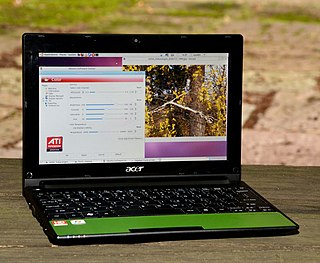
Acer Aspire One is a line of netbooks first released in July 2008 by Acer Inc.

The first netbook offering by Gigabyte, the M912, is a hybrid netvertible Tablet PC device, was released in 2008. It features an Intel Atom processor and comes preloaded with either Windows XP, Windows Vista or a customised Linux distribution. The hardware varies slightly depending on the OS chosen. The Linux Version for example does not include Bluetooth and has a lower resolution screen. Press accounts suggest that there may be significant heat and speed issues compared with other netbooks. Other criticisms focus on Gigabyte's choice to ship one variant with Windows Vista Home Basic, which lacks official Tablet PC support and their refusal to ship it in the United States or Canada.

The Samsung NC10 is a subnotebook/netbook computer designed by Samsung. At the time of its introduction (2008), it was noted for its combination of a 10.2" screen and large 6-cell battery as standard, giving a battery life of up to 7.5 hours, a large hard disk drive and a release price of 499 USD.

The Sony Vaio P series is a range of ultraportable subnotebook computers launched in January 2009.
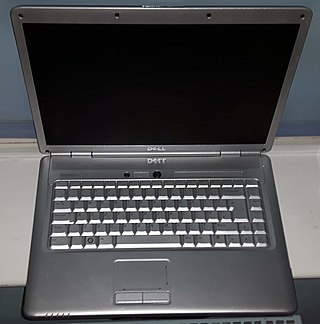
The Inspiron 1525 was a laptop designed and distributed by Dell as part of their Inspiron product line. An AMD variant known as the Inspiron 1526 was also released. The Inspiron 1525 was the successor to the Inspiron 1520, released on January 4, 2008. It was available to purchase on the Dell website, where it could be customized to the user's specification.

HP Mini is a former line of small computers categorized as netbooks manufactured by Hewlett-Packard. They either contained a custom version of Ubuntu Linux, Windows XP Home Edition, or Windows 7 Starter operating system. Like most netbooks, they were not built with CD/DVD drives.

The Vaio X series is a line of high-end ultraportable notebook computers from Sony introduced in September 2009, claiming to be the world's lightest notebook, at 655 grams ( ). It features an 11.1", 16:9, 1366x768 LED-lit LCD screen with built-in webcam, 2GB of DDR2 RAM, a choice of 64, 128 or 256 GB SSD, Intel Atom Z540 1.86 GHz or Z550 2.00 GHz, WWAN.

The IdeaPad S Series is a series of notebook computers launched by Lenovo in October 2008. The IdeaPad S10 was initially scheduled for launch in September, but its release was delayed in the United States until October.

On June 26, 2007, Dell released the new Inspiron desktop series, under the Dell Inspiron branding, as a replacement to the Dell Dimension desktop computers.

The Dell Inspiron series is a line of laptop computers made by American company Dell under the Dell Inspiron branding. The first Inspiron laptop model was introduced before 1999. Unlike the Dell Latitude line, which is aimed mostly at business/enterprise markets, Inspiron is a consumer-oriented line, often marketed towards individual customers as computers for everyday use.

